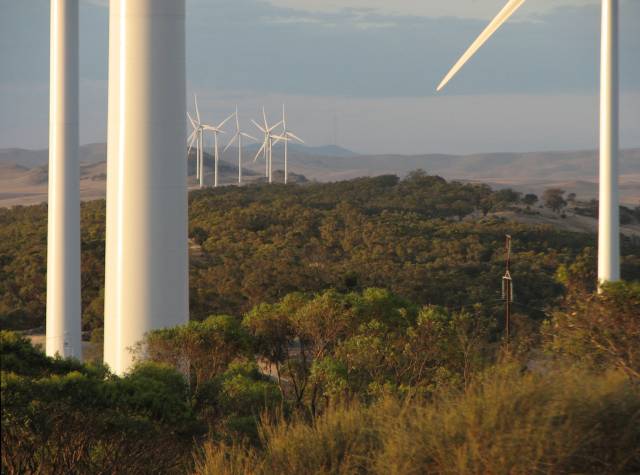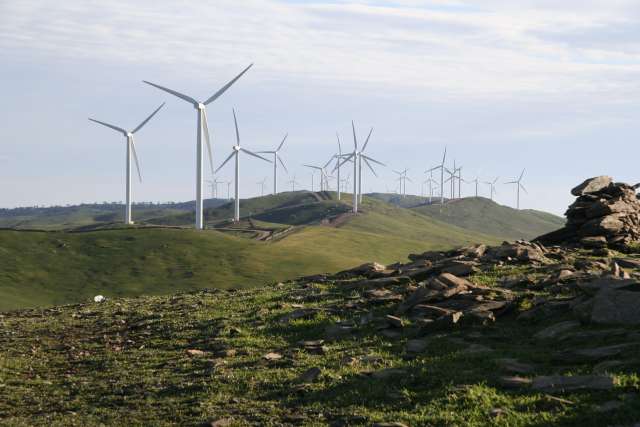|
Introduction
The Lancet paper was "Electricity generation and health", by Anil Markandya and Paul Wilkinson (Sep 15-Sep 21, 2007; 370, 9591; Research Library pg. 979). (The Lancet is probably the health science journal having the highest reputation of any in the world.)The Lancet article specifically referred to Europe, it is likely that the figures in most Western countries would be similar, although one could speculate that they would be lower in Australia because of our low population density.
It should be noted that these figures do not include damage due to the large portion of climate change, ocean acidification, sea level rise and ocean warming that is due to burning coal. These will be far worse than the more direct health problems from 'air pollution' in the long term.
A single three megawatt turbine in Australia can be expected to generate 8.8 GWh of electricity each year; on the assumption that this replaces the same amount of coal-fired power and based on the figures published in The Lancet, each such turbine will save two serious illnesses each year.
Of course it is not only wind power that displaces dirty, polluting coal-fired power, solar and all other forms of renewable energy do too, but the main subject of this page is the positive impact of wind power.
More on the health problems there would be without wind farms can be read
elsewhere on this site.
|
|
Health cost of coal
A study published in Our World in Data in February 2020 showed that power generated by the burning of fossil fuels, coal in particular, kills hundreds of times as many people per unit of power generated as does power generated by wind or solar. I've summarised these results and provided a link to the original study elsewhere on these pages.
|
The numbers
If you are not interested in the arithmetic you might like to skip this section.The Lancet paper mentioned above stated that air pollution from coal fired power stations result in 24 deaths and 225 serious illnesses per Terrawatt-hour (TWh) of electricity generated (see Table 2 of the paper).
A graph published in the Australian
Energy Market Operator's report titled 'SA Supply and Demand Outlook 2011',
giving SA's power consumption, shows that total power consumption in 2006 was
around 14 TWh and in 2011 was around 14.5 TWh.
This graph combined with a report released by
Energy Quest on 2012/03/19
allows the figures in the following table to be approximated:
| |||||||||||||||||||||
So, in the Snowtown example: the Snowtown Wind Farm in South Australia generates about 360 gigawatt-hours per year (360 GWh = 0.36 TWh). If two thirds of this (0.24 TWh) displaces coal power then Snowtown Wind Farm has reduced coal-fired power production by 0.24 TWh. Then, (again approximately) 0.24 × 24 = 6 lives saved and 0.24 × 225 = 54 serious illnesses avoided per year just from the one wind farm.
The numbers for the whole of SA
Average annual generation from all SA wind farms calculated for 2011 was 3.44 TWh. Two thirds of this is 2.29 TWh. So it can be estimated that South Australia's wind farms are saving about 55 lives and avoiding about 520 serious illnesses each year.
|
|
The implications for the whole of Australia
|
At the time of writing this section, 2012, both state and federal Liberal Coalition governments in Australia were opposing renewable energy. By 2020 this had changed in the states, where both Coalition and Labor governments were supporting renewable energy.
|
|
At the end of 2011 installed wind power capacity in Australia was 2 476 MW. Based on a capacity factor of 34% this generates about 7.4 TWh of electricity. If we conservatively estimate that half of this replaces coal-fired electricity then it saves about 88 lives and 830 serious illnesses each year.
By making it very difficult, or economically unviable, to build wind farms in Victoria, NSW and Queensland the governments of those states have made it much harder for wind farm builders to reduce these numbers of unnecessary deaths and illnesses. These governments have not only put a stop to the growth of this important renewable energy industry and in so doing damaged the economies of their own states, but they have also condemned thousands of their citizens to unnecessary serious illnesses and hundreds to an early death each year.
One has to ask why these Liberal governments are so strongly opposed to renewable wind power? The only answer that I can see is that they are in the pockets of the fossil fuel industry.
|
|
Port Augusta – coal-fired power stations that could be replaced by wind and solar
|
In early 2012 it was announced that the Tom Playford Power Station, the dirtiest power station in Australia in terms of tonnes of CO2 per megawatt of power generated, is to be permanently closed, and the larger Northern Power Station is only to be used in summer in future. This is at least in part due to wind power taking the place of coal-fired power.
Repower Port Augusta was
proposing a solar power station to replace the coal-fired power stations.
Related pages on external sites...
|
- In March 2014 the World Health Organisation released figures linking
indoor and outdoor air pollution to around seven million deaths a year
making it the biggest single environmental health risk.
The outdoor pollution was largely due to traffic fumes and coal-burning; both
of which could be eliminated by a transition to renewable energy.
See an article in the Guardian
or the WHO pdf file.
- The Lancet,
Electricity generation and health,
Prof Anil Markandya PhD and Paul Wilkinson FRCP.
(This is the paper I have relied on primarily for the numbers of deaths
and serious illnesses due to coal-fired electricity generation.)
24 deaths and 225 serious illnesses per TWh of coal-fired electricity.
- Doctors for the Environment, Australia;
How coal burns Australia: The true cost of burning coal.
- The Conversation, 2016/07/21; Fiona Armstrong and Peter C. Doherty (Nobel Laureate 1996, Australian of the Year 1997)
discussed the threat that climate change was posing to health.
Replacing fossil fuels with renewable such as wind power will slow climate
change.
- Doctors for the Environment, Australia;
The health factor: Ignored by industry, overlooked by government
Failure to prevent pollution and protect human health is creating a costly
legacy for Australia
- Beyond Zero Emissions,
Is Coal Mining Harming Our Health?
- A report from the Climate and Health Alliance and The Climate Institute,
jointly, Our Uncashed Dividend: The health
benefits of climate action puts the human health costs from lung, heart
and nervous system diseases due to coal-fired power at $2.6 billion annually.
- The Climate and Health Alliance got together with the Public Health
Association of Australia to produce a
short video on the very real health risks of mining and burning coal
and unconventional gas.

Part of Waterloo Wind Farm - Annals of the New York Academy of Sciences; Full cost accounting for the life cycle of coal; Epstein, Buoonocore
and many others.
It mentions 13 000 deaths in the US per year from coal.
- The Health Effects of Coal Electricity Generation in India; Table 7,
Distribution of Deaths Attributable to Emissions – All Plants 2008;
Cause Deaths per TWh Particulate matter 5 SO2 74 NOx 19 Total 98
- Next Big Future; calculated from WHO and others:
World: 161 deaths from coal per TWh;
USA: 15 deaths/TWh;
China: 278 deaths/TWh;
- Economic Analysis of Various Options of
Electricity Generation – Taking into Account Health and Environmental
Effects; Nils Starfelt, Carl-Erik Wikdahl;
25 deaths per TWh for coal in the European Union.
- American Economic Review: Environmental Accounting for Pollution in the
United States Economy; Nicholas, Muller, Mendelsohn and Nordhaus:
Executive Summary,
Full text.
From the Executive Summary: "... oil and coal-fired power plants have GED larger than their value added. Put differently, if the accounts estimated net value added as including environmental damage, the net value added of these industries would be negative."
From the Abstract: "The largest industrial contributor to external costs is coal-fired electric generation, whose damages range from 0.8 to 5.6 times value added."
- PowerWorks;
Health and Climate
Benefits of Altmont Pass Wind Power – on humans and birds.
A report by Donald McCubbin, PhD and Bengamin Sovacool, PhD, dated December
2011 titled 'Health, Wildlife and Climate Benefits of the 580 MW Altamont
Wind Farm' states that electricity generated by the Altamont Wind Farm, by
replacing fossil-fuelled power, is expected to save 168 premature human
deaths over a 40-year period.
The report also estimated that about 130 000 avian deaths will be avioded
due to reduced air pollution (including the wind farm's effect on slowing
climate change).
- An article by Tom Ferrio in
Progressive Charlestown.
Tom writes about a visit to Embres-et-Castelmaure in France.
Speaking about wind farm opponents at Charlestown, Rhode Island, USA Tom
wrote
"It saddens me that people feel they have to demonize the entire industry to
prevent a wind turbine being built close to them."
- Wikipedia:
Environmental impact of coal power
- Wind Power Saved USA Tens or Hundreds of Billions of Dollars (2007-2015), Study Finds; (reduced health-care costs, and it saved lives) CleanTechnical, 2017/09/11

